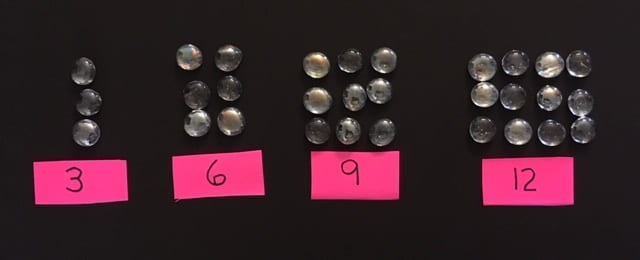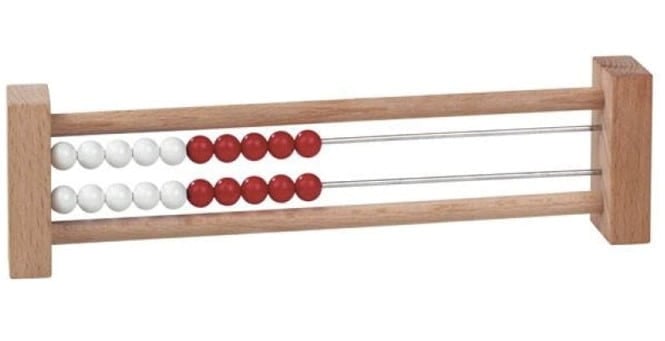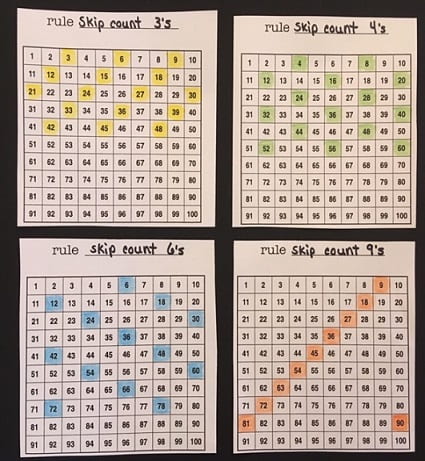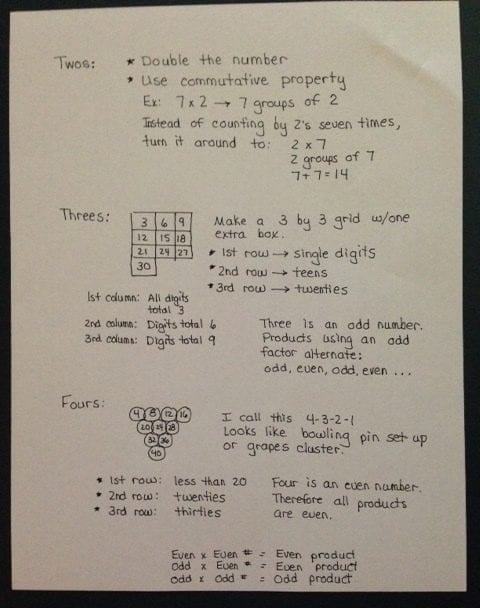by C. Elkins, OK Math and Reading Lady
This is part 4 in a continuing series of posts about basic multiplication teaching concepts. Use them for beginning lessons or reteaching for struggling learners. Students could be struggling because they were not given enough exposure to concrete and pictorial models before going to the numbers only practices. The focus in this post will be skip counting to determine multiplication products. I will even focus on skip counting done in early grades (counting by 10’s, 5’s, and 2’s). Read on for 10 teaching strategies regarding skip counting.
 I am going to give some of my opinions and misconceptions students have about skip counting.
I am going to give some of my opinions and misconceptions students have about skip counting.
- Many students do not associate skip counting with multiplication, but just an exercise they started learning in KG and 1st (skip counting orally by 10’s, 5’s, and 2’s). This is often because they started with numbers only and did not have the chance to see what this looks like using concrete objects or pictorial representations.
- If you observe students skip counting, are they really just counting by 1’s over and over again? Or are they adding the number they are skip counting by repeatedly. You know the scenario. You tell a student to skip count by 3’s and they know 3, 6, 9, but then hold up their 3 fingers and count 10, 11, 12, 13, 14, 15, 16, 17, 18, and so on. Or are they truly counting like this: 3, 6, 9, 12, 15, 18, 21, 24, 27, 30?
- The main issue I have with skip counting is that if a student makes an error regarding just one of the numbers in the sequence, then the rest of the sequence is incorrect. So this should not be their only strategy. Do you recall a previous story I mentioned about the 5th grader who tried to solve 12 x 3 by skip counting on a timed facts test? He was unsuccessful because he kept losing track and didn’t have another strategy to use.
- Successful skip counting reinforces the concept that multiplication is repeated addition – do your students know this? I have witnessed many students who know the first 2-3 numbers in a skip counting sequence, but then don’t know how to get to the next numbers in the sequence.
- Students don’t often relate the commutative property to skip counting. Let’s say the problem is 5 x 8. The student tries skip counting by 8’s (because this problem means 5 groups of 8) and may have difficulty. Does the student try to skip count by 5’s eight times instead?
Ten teaching strategies for skip counting:
- For young students skip counting, use objects to show how to keep track:
- Base 10 rods
- Rekenrek (easily slide 5 or 10 beads at a time)
- 5, 10, 15, 20
- Count by 5’s or 10’s
- Hand prints (for counting 5’s or 10’s): Which do you think would give students a better understanding: Holding up one hand at a time and counting by 5’s or lining up several children and having them hold up their hands as you continue counting? The second scenario enables students to see the total of fingers as opposed to just 5 at a time.
- Use money: nickels and dimes
- Associate counting by 2’s with concepts of even and odd
- Use manipulatives. Do it often and with a variety of materials. The arrangements should emphasize the other strategies (equal groups, arrays, repeated addition).

- Draw and label pictures. The labels for this strategy would show the cumulative totals instead of just the number in each group.

- Arrange students in line or groups to practice skip counting. Example if practicing 4’s: Every 4th student turns sideways, every 4th student holds up their hands, every 4th student sits down. every 4th student holds a card with the number representing their value in the counting sequence, etc.

- Practice skip counting while bouncing or dribbling a ball. Great for PE class!
- Associate skip counting with sports: 2 and 3 pointers in basketball, 6 points for touchdowns in football, etc.
- Use a 0-100 chart to see patterns made when skip counting. I love the 0-100 pocket chart and translucent inserts that allow you to model this whole group. Individual 100 charts are readily available in which students can mark or color the spaces. Here are links to the chart and the translucent inserts: 1-100 pocket chart and Translucent pocket chart inserts
- Look for other patterns regarding skip counting. Refer to my previous post on this for more details: Skip counting patterns
- Skip counting by 2, 3, 4
- Skip counting by 6, 8, 9
- Relate skip counting to function charts and algebraic patterns using growing patterns.

- Practice skip counting using money: by 5’s, 10’s, 25’s, 50’s
What strategies do you like for multiplication? What misconceptions do you see with your students?
Next post will be part 5 of my multiplication posts – and the last one for this school year. I will focus on using these basic concepts with double-digit problems. Stay tuned!!






Thanks for this useful information. I will probably use it with my incoming 4th graders because no one strategies works for all students.